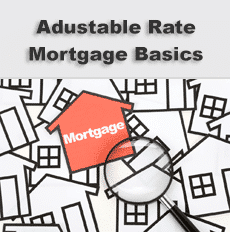 Adjustable rate mortgages or ARMs are home loans where your payments change with the state of the economy, to reflect changing interest rates. A typical ARM has a period fixed for five years and then adjusting annually after that. The hazard for ARMs is that, if the economic conditions are right, they can become very expensive down the road.
Adjustable rate mortgages or ARMs are home loans where your payments change with the state of the economy, to reflect changing interest rates. A typical ARM has a period fixed for five years and then adjusting annually after that. The hazard for ARMs is that, if the economic conditions are right, they can become very expensive down the road.
Breaking Down The Payments
Home loans pay interest as rent to the lender for the amount outstanding and gradually repay the principal. In the case of fixed rates, the interest rate is set when the loan company or bank creates the loan, and you have a predetermined schedule that pays a fixed rate of interest on the outstanding balance, and the rest of the payment goes to returning the principal.
A fully adjustable would allow the lender to charge you whatever interest they felt like each month, this is not the case with ARMs. The interest rate adjustments occur on a schedule, they tie to some independent factor, commonly the prime lending rate plus a predetermined percentage.
As the principal you have paid increases, the less interest and the more rapidly you pay down the balance of the loan; this is also true of ARMs but when they adjust you continue to repay the principal according to schedule but the updated interest rate changes your overall payment.
Give And Take For An Enticing Initial Lower Rate
The market for ARMs is not a free-for-all, but this type of loan does present a risk in the future if the prime rates should change dramatically right as your rate is due to adjust. If the prime rate were to climb rapidly to the double-digit levels seen last in the 1980s, your home loan could become extremely expensive as soon as the ARM updates.
The advantage of ARMs is that you can get a better initial rate; ARMs cost less to start, and you might pay less over the life of the loan, assuming economic conditions remain favorable for the next fifteen to thirty years.
However, even if the average prime rate stays flat, there is the risk that, for reasons yet unknown, the prime rate spikes for a short time, just as your rate resets and you have to pay higher interest for a year or more. Additionally, it may not be possible to refinance on favorable terms because, if the prime rate goes up, all new lending will tend to incur a higher rate of interest.
Betting On Good Times Ahead
Just because double digit resets are not likely, that is not the same as impossible. If you borrow on an ARM, you take the risk that the unexpected will occur. The other side of that risk is that introductory rates on ARMs are often lower than the equivalent fixed rate loan.
If it works out that rates do not change, or they improve, over the lifetime of the loan it could save you a lot of money. When you choose an ARM, you are making a bet that interest rates will not move against you.



About The Author: Kenneth Le
More posts by Kenneth Le